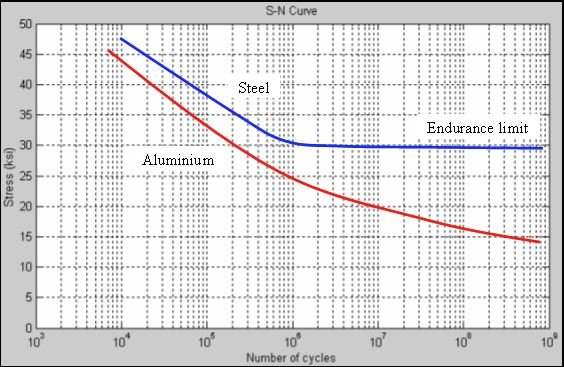Fatigue is a failure mode that occurs due to cyclic loads. The process involves the initiation and propagation of cracks that grow and eventually fracture. Fatigue data is experimentally obtained from standardized samples of different materials and a plot of alternating stress vs number of cycles to failure is obtained. The graph below shows S-N curves for steel and aluminum. (Note: logarithmic scales are often used so one needs to read the graph carefully)
The code indicates the following to address fatigue.
Screening Criteria (to see if fatigue analysis is required)
Past Experience
Method A
Method B
Fatigue Assessment Methods
Elastic Stress Analysis and Equivalent Stresses
Elastic Plastic Stress Analysis and Equivalent Strains
Welds - Elastic Analysis and Structural Stress
Ratcheting Assessment
Elastic Analysis
Simplified Elastic Plastic Analysis
Thermal Stress
Elastic Plastic Analysis
Ratcheting or cyclic creep is when plastic deformation accumulates due to cyclic mechanical or thermal stress.


